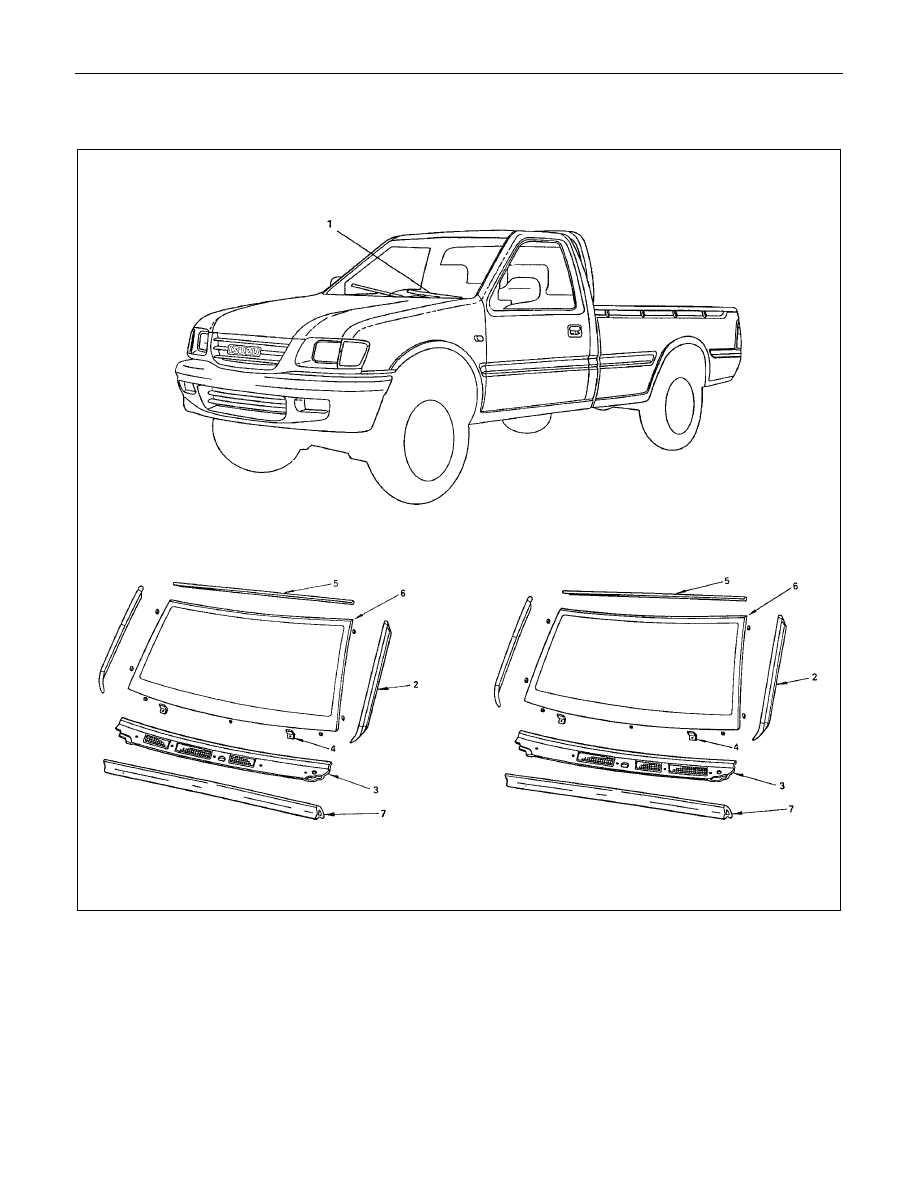Content .. 999 1000 1001 1002 ..
Isuzu D-Max / Isuzu Rodeo (TFR/TFS). Manual - part 1001

10-4 CAB
REMOVAL AND INSTALLATION
For RHD model
For LHD model
Removal Steps
1. Wiper arm assembly
2. Side moulding
3. Vent cowl cover
4. Windshield stopper
5. Upper moulding
V
6. Windshield glass
7. Engine hood rear seal
Installation Steps
V
7. Engine hood rear seal
V
6. Windshield glass
V
5. Upper moulding
V
4. Windshield stopper
3. Vent cowl cover
V
2. Side moulding
1. Wiper arm assembly